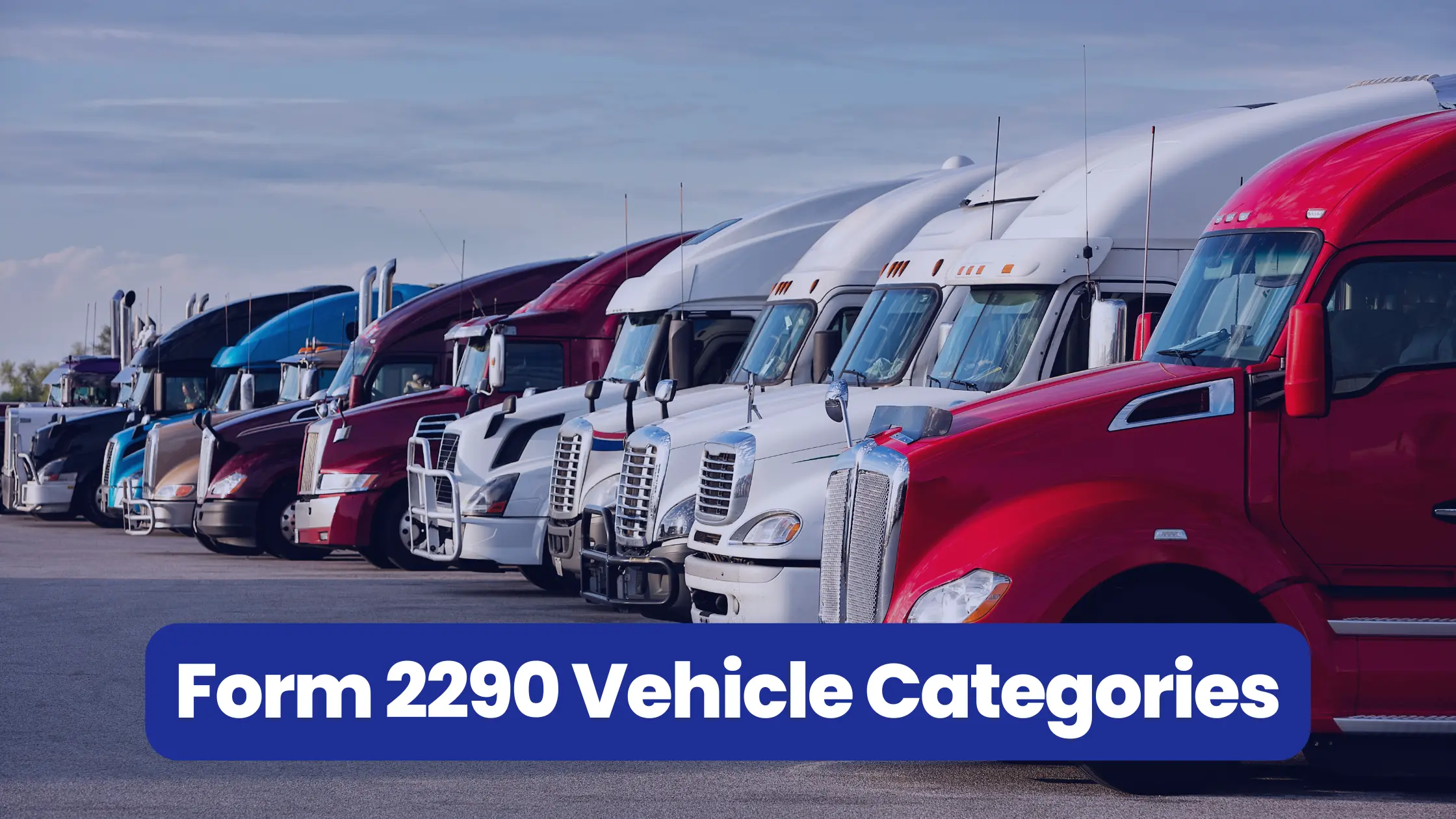09-06-2024
Learn Form 2290 Vehicle Categories to avoid overpayment
Owners of heavy motor vehicles or trucks with a taxable gross weight of 55,000 pounds or more that operate on public highways are required to pay the Heavy Vehicle Use Tax (HVUT), which is filed using IRS Form 2290.
Understanding the category of your vehicle is essential before paying HVUT, as the vehicle category significantly impacts the calculation of the form 2290 tax amount.
Form 2290 Weight Categories:
First, let's understand what taxable gross weight and logging vehicles are to better comprehend the Form 2290 vehicle categories.
What is a Taxable Gross Weight?
Taxable gross weight refers to the total weight a heavy vehicle is legally permitted to carry, including the weight of the vehicle itself, its maximum load capacity, and any trailers. This weight is a critical factor in determining the Heavy Vehicle Use Tax (HVUT) that heavy vehicle owners must pay when filing IRS Form 2290.
The tax amount is directly related to the vehicle's taxable gross weight and its type of use, such as whether it is used for regular transportation or logging.
What is a Logging Vehicle?
Logging vehicles are specialized vehicles used exclusively to transport materials harvested from forests, including timber, lumber, charcoal, plywood, veneers, and poles
It is important to determine whether your vehicle qualifies as a logging vehicle before paying the Heavy Vehicle Use Tax (HVUT), as logging vehicles are subject to a lower tax rate compared to regular heavy vehicles. For more detailed information about logging vehicles, you can refer to our blog on Form 2290 Logging Vehicles.
Form 2290 Vehicle Categories(A - W)
The IRS categorizes vehicles based on their taxable gross weight, and the tax amount varies depending on whether the vehicle is a logging vehicle or a regular heavy vehicle. These categories generally range from A to V, with each category corresponding to a specific weight range and tax rate.
Here's a simplified table for better understanding:
In addition to the vehicle categories A to V, there is another category known as Category W, or Suspended Vehicle.
What is a Suspended Vehicle (Category W)?
A suspended vehicle, categorized as Category W, is a taxable vehicle that is expected to operate within the mileage limit of 5,000 miles or less (or 7,500 miles or less for form 2290 agricultural vehicles) during the tax period. Vehicles in this category are exempt from paying the Heavy Vehicle Use Tax (HVUT), but the vehicle owner must still file Form 2290 to notify the IRS of the vehicle's suspended status.
It is crucial to indicate your vehicle as a suspended vehicle on Form 2290 to avoid unnecessary tax payments. If the vehicle exceeds the specified mileage limit during the tax period, it will no longer qualify as suspended, and the appropriate HVUT will need to be paid
What is an Exempted vehicle?
Tax-exempt vehicles are used by specific entities and are not required to pay the Heavy Vehicle Use Tax (HVUT), but they must inform the IRS of their exemption by filing Form 2290. These vehicles are typically owned or operated by:
The Federal Government
The District of Columbia
The American National Red Cross
State or local governments
Non-profit fire departments, rescue squads, or ambulance associations
Mass transportation authorities
Indian tribal governments performing essential functions
Qualified blood collector vehicles
Mobile machinery not categorized as heavy vehicles
What is a Credit Vehicle?
A vehicle is considered a credit vehicle if it was sold, destroyed, or stolen during the tax period. In these cases, you can claim a refund of the Heavy Vehicle Use Tax (HVUT) using Form 8849 (Schedule 6) in the same or a subsequent tax period. The refund amount is based on the date when the vehicle was sold, destroyed, or stolen.
WRAP:
After reading the blog, you will gain a detailed understanding of the various vehicle categories included in Form 2290, along with the applicable tax rates for each category.
